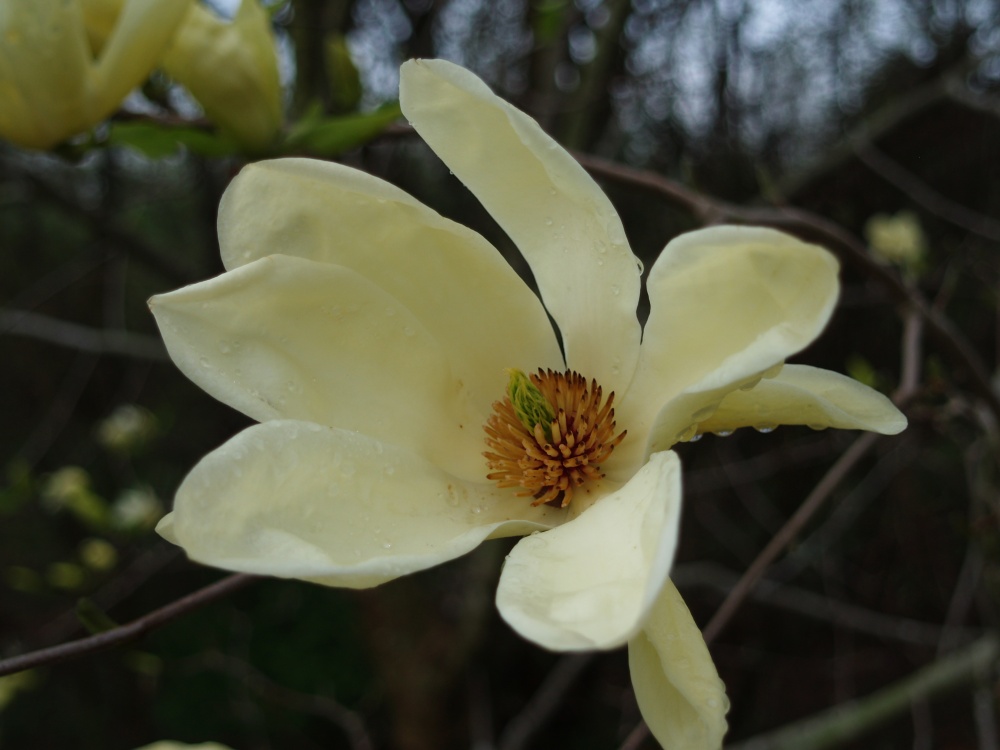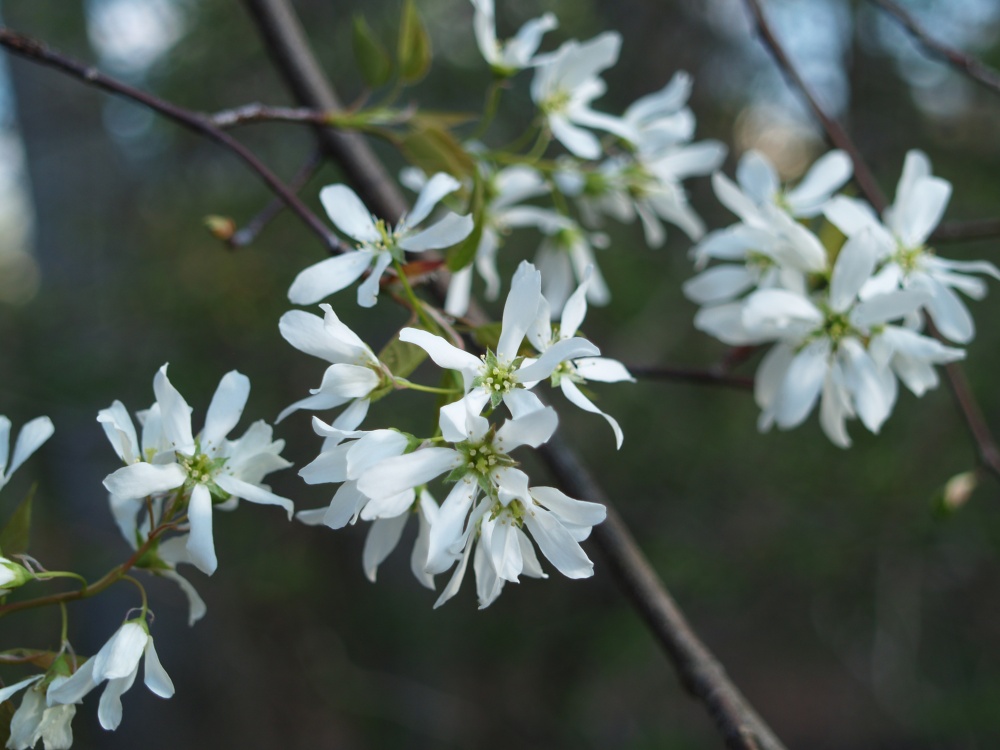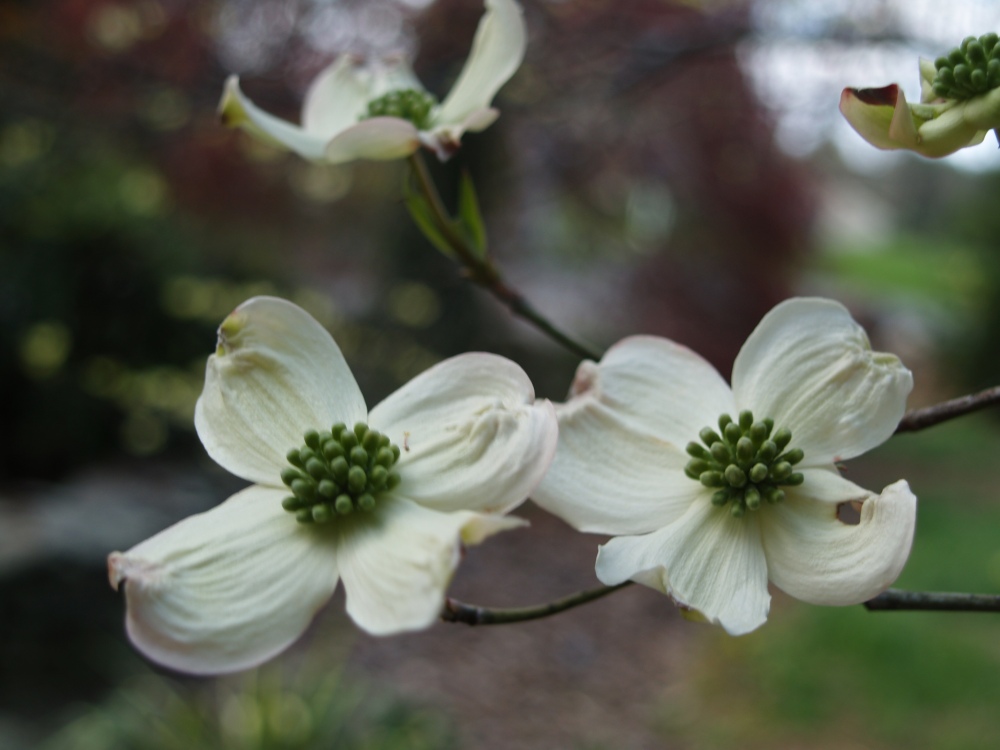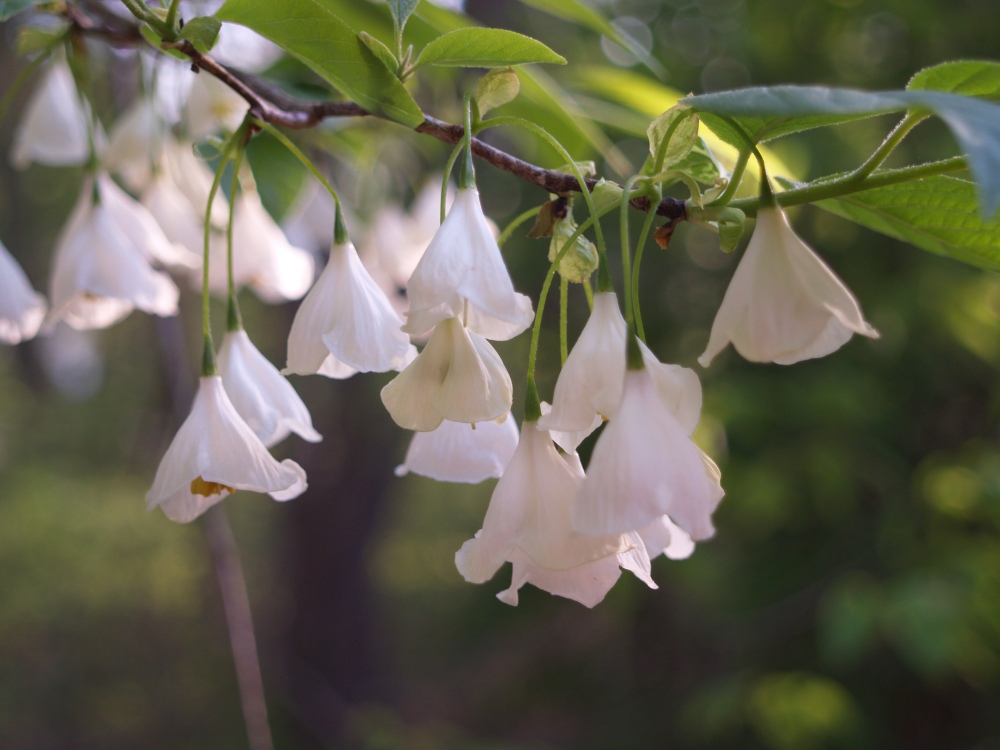Yesterday’s strong thunderstorms soaked the garden so that there was standing water at the lower end of the back garden. Otherwise, there was no damage, though some of the pine bark chunks that mulch the new bed areas were washed out. I use the large chunk mulch because it is long-lasting, so long as it doesn’t float downstream. Smaller bark chips, fresh wood chips, and shredded bark break down more quickly and are better for the soil, but I resist mulches that must be replenished annually.
The driveway and lawn areas were littered with magnolia blossoms this morning, their farewell until March next year. The creamy yellow ‘Elizabeth’ magnolia (above) has just begun to bloom, and though a few flowers were blown off in the gale, most will remain for another week. Elizabeth is an upright grower, and faster than most of the deciduous magnolias.
The March blooming pears, magnolias, and cherries are native to Asia, but in April the most common flowering trees are native to states east of the Mississippi. Serviceberry (Amelanchier canadensis, above) has been in bloom since the last week of March, and often I wonder as I drive whether white blooms poking their heads from the forest’s edge are serviceberries or flowering pears that have escaped cultivation. Usually, they are pears that are encroaching on the native trees.
The eastern redbud (Cercis canadensis, above) begins its floral display along mid-Atlantic area roadsides early in April, and if temperatures aren’t too warm it might remain in bloom for three weeks. In my garden there are two red leafed ‘Forest Pansy’ redbuds, two variegated leaf ‘Silver Cloud’, a weeping “Lavender Twist’, and yellow leafed ‘Hearts of Gold’. All are blooming, and if there was adequate space I would add more.
The native dogwood (Cornus florida, above) usually begins to flower a week or two after the redbuds, but this year they followed by only a few days. In my garden the variegated leafed, red flowering Cherokee Sunset set no buds in late summer, so there are no blooms this spring, but the two white flowering dogwoods are blooming heavily. Last year the weeping white dogwood had only a few flowers, but it is blooming more robustly today.
The hybrid crosses between the American native dogwood (Cornus florida) and the Chinese dogwood (Cornus kousa), and between the eastern and Pacific dogwood (Cornus nutalli) will bloom early in May, and will be followed by the Chinese dogwoods later in the month. So, there will be blooming dogwoods in the garden from mid April into June. All are splendid trees, suitable for gardens of nearly any size.
For several years after planting the Carolina Silverbell (Halesia carolina, above) I was disappointed by its sparse blooms, but eventually it has won me over with its pendulous, white, bell shaped flowers. Planted at the forest’s edge it grows with an open, irregular habit, though I would expect it to be more compact growing in full sun.
Though the early blooming magnolias and cherries are delightful, and most appreciated in welcoming spring, there are no finer trees than the native flowering trees of April.
I thoroughly enjoyed your comments on your garden and the pictures of the trees, shrubs and plants.
What I’d really like to see would be some general pictures of the garden to get a better feel for the relationships you describe.
Thanks for a really entertaining read.
Alan
I recently included some wider angle photos and occasionally I’ll post others if I see an area that catches my eye. In the next couple weeks I’ll do my annual pond update, so there are usually more general photos of the ponds and the surrounding plantings.